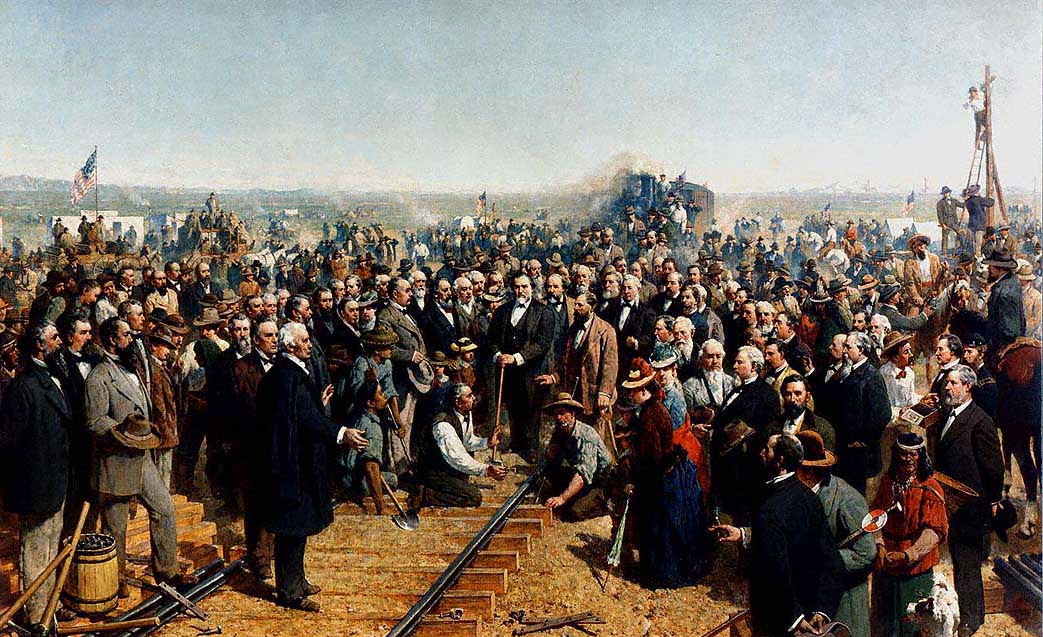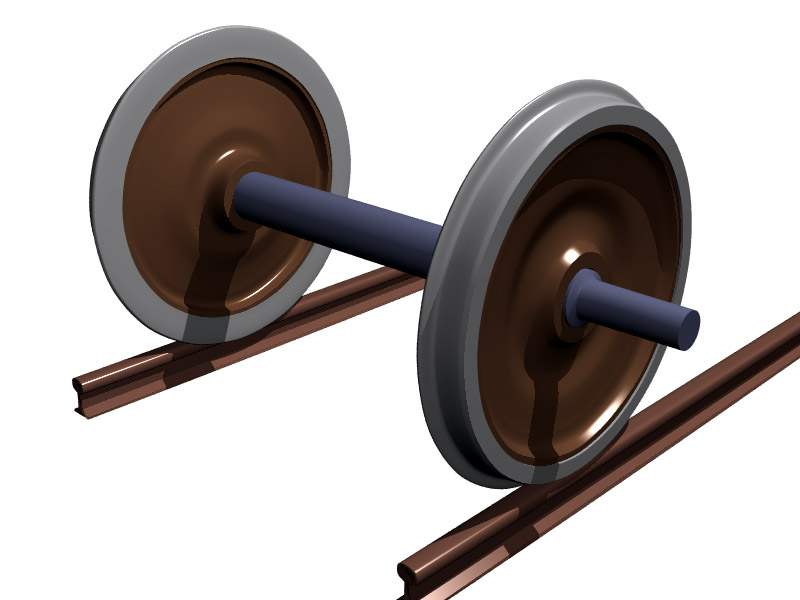|
Soviet Locomotive Class AA20
The AA20 was a one-off steam locomotive constructed by the Soviet Union under the dictatorship of Joseph Stalin. Wheel arrangement The AA20 was a "4-14-4" locomotive (using the Whyte notation classification of steam locomotives by wheel arrangement). It featured four leading wheels, fourteen coupled driving wheels (seven axles) in a rigid frame, and four trailing wheels. Equivalent classifications in other notations would have been: *UIC classification: 2G2 (also known as German classification and Italian classification) *French classification: 272 *Turkish classification: 711 *Swiss classification: 7/11 *Russian classification: 2-7-2 History The sole example of this type, called the AA20-1, was built by the Soviet Union. The designation stands for Andrey Andreyev (who sponsored its construction), 20 ton axle load. While some builders had produced twelve-coupled (six driving axles) designs, no one had ever built a fourteen-coupled engine. The AA20-1 holds two records: the l ... [...More Info...] [...Related Items...] OR: [Wikipedia] [Google] [Baidu] |
Voroshilovgrad Locomotive Factory
Luhanskteplovoz ( uk, Луганськтепловоз or Luhansk Locomotive Works), earlier known as Voroshilovgrad Locomotive Works is a large industrial company in Luhansk, Ukraine, manufacturing locomotives, multiple unit trains (both electric and diesel) as well as other heavy equipment. Due to the War in Donbas it has not been operating since March 2015. According to media reports, by late 2015 the works were looted and completely inoperational. The company was founded in 1896 as Russische Maschinenbaugesellschaft Hartmann in Lugansk (Russian Engineering Company Hartmann in Luhansk) and renamed October Revolution Locomotive Factory in November 1922.Maurice Railroad Equipment Industry List (MREIL) List of European locomotive and rolling stock manufacturers collated by Maurice Jansen, via ''railfaneurope.net'' ... [...More Info...] [...Related Items...] OR: [Wikipedia] [Google] [Baidu] |
Turkish Classification
In the Turkish classification system for railway locomotives, the number of powered axles are followed by the total number of axles. It is identical to the Swiss system except that the latter places a slash between the two numbers. Thus 0-6-0 becomes 33 4-6-2 becomes 36 2-6-4 becomes 36 2-8-0 Under the Whyte notation for the classification of steam locomotives, represents the wheel arrangement of two leading wheels on one axle, usually in a leading truck, eight powered and coupled driving wheels on four axles, and no trailing wheels ... becomes 45 See also * UIC classification system Locomotive classification systems Locomotives of Turkey {{europe-rail-transport-stub ... [...More Info...] [...Related Items...] OR: [Wikipedia] [Google] [Baidu] |
Lateral Motion Device
A lateral motion device is a mechanism used in some railroad locomotives which permits the axles to move sideways relative to the frame. The device facilitates cornering. Purpose Prior to the introduction of the lateral motion device, the coupled driving wheels on steam locomotives (often simply called "drivers") were held in a straight line by the locomotive's frame. The flanges of the drivers were spaced a bit closer than the rail gauge, and they could still fit between the rails when tracking through a mild curve. At some degree of curvature, though, the flanges on the center driver would begin to bind in the curve. The closer the front and rear drivers were, the smaller the radius of curve that the locomotive could negotiate. One solution was to make the center driver(s) "blind," i.e. without flanges on the tires. The other solution was to allow at least one of the axles (often the front driver) to move laterally relative to the frame, and such designs incorporated various dev ... [...More Info...] [...Related Items...] OR: [Wikipedia] [Google] [Baidu] |
Driving Wheel
On a steam locomotive, a driving wheel is a powered wheel which is driven by the locomotive's pistons (or turbine, in the case of a steam turbine locomotive). On a conventional, non-articulated locomotive, the driving wheels are all coupled together with side rods (also known as coupling rods); normally one pair is directly driven by the main rod (or connecting rod) which is connected to the end of the piston rod; power is transmitted to the others through the side rods. On diesel and electric locomotives, the driving wheels may be directly driven by the traction motors. Coupling rods are not usually used, and it is quite common for each axle to have its own motor. Jackshaft drive and coupling rods were used in the past (e.g. in the Swiss Crocodile locomotive) but their use is now confined to shunting locomotives. On an articulated locomotive or a duplex locomotive, driving wheels are grouped into sets which are linked together within the set. Diameter Driving whee ... [...More Info...] [...Related Items...] OR: [Wikipedia] [Google] [Baidu] |
Lugansk
Luhansk (, ; uk, Луганськ, ), also known as Lugansk (, ; russian: Луганск, ), is a city in what is internationally recognised as Ukraine, although it is administered by Russia as capital of the Luhansk People's Republic (LPR). As of 2021, the population was estimated to be 399,559, making Luhansk the most populous city in the region and the 12th largest in Ukraine. In 2001, nearly half of the population was ethnically Ukrainian, and 47% was ethnically Russian. Luhansk has been the capital and administrative center of Luhansk Oblast, although the Ukrainian administration was relocated to Sievierodonetsk when the War in Donbas broke out following the establishment of LPR. Etymology Luhansk was named after the Luhan River, which flows through the city. According to folk etymology, the name is also derived to the word "Luh" (Ukrainian: Луг), which means "meadow", referring to the floodplains around the river. History The city traces its history to 1795 when ... [...More Info...] [...Related Items...] OR: [Wikipedia] [Google] [Baidu] |
Krupp
The Krupp family (see pronunciation), a prominent 400-year-old German dynasty from Essen, is notable for its production of steel, artillery, ammunition and other armaments. The family business, known as Friedrich Krupp AG (Friedrich Krupp AG Hoesch-Krupp after acquiring Hoesch AG in 1991 and lasting until 1999), was the largest company in Europe at the beginning of the 20th century, and was the premier weapons manufacturer for Germany in both world wars. Starting from the Thirty Years' War until the end of the Second World War, it produced battleships, U-boats, tanks, howitzers, guns, utilities, and hundreds of other commodities. The dynasty began in 1587 when trader Arndt Krupp moved to Essen and joined the merchants' guild. He bought and sold real estate, and became one of the city's richest men. His descendants produced small guns during the Thirty Years' War and eventually acquired fulling mills, coal mines and an iron forge. During the Napoleonic Wars, Friedrich ... [...More Info...] [...Related Items...] OR: [Wikipedia] [Google] [Baidu] |
Germany
Germany, officially the Federal Republic of Germany (FRG),, is a country in Central Europe. It is the most populous member state of the European Union. Germany lies between the Baltic and North Sea to the north and the Alps to the south. Its 16 constituent states have a total population of over 84 million in an area of . It borders Denmark to the north, Poland and Czechia to the east, Austria and Switzerland to the south, and France, Luxembourg, Belgium, and the Netherlands to the west. The nation's capital and most populous city is Berlin and its main financial centre is Frankfurt; the largest urban area is the Ruhr. Settlement in what is now Germany began in the Lower Paleolithic, with various tribes inhabiting it from the Neolithic onward, chiefly the Celts. Various Germanic tribes have inhabited the northern parts of modern Germany since classical antiquity. A region named Germania was documented before AD 100. In 962, the Kingdom of Germany formed the ... [...More Info...] [...Related Items...] OR: [Wikipedia] [Google] [Baidu] |
Essen
Essen (; Latin: ''Assindia'') is the central and, after Dortmund, second-largest city of the Ruhr, the largest urban area in Germany. Its population of makes it the fourth-largest city of North Rhine-Westphalia after Cologne, Düsseldorf and Dortmund, as well as the ninth-largest city of Germany. Essen lies in the larger Rhine-Ruhr Metropolitan Region and is part of the cultural area of Rhineland. Because of its central location in the Ruhr, Essen is often regarded as the Ruhr's "secret capital". Two rivers flow through the city: in the north, the Emscher, the Ruhr area's central river, and in the south, the Ruhr River, which is dammed in Essen to form the Lake Baldeney (''Baldeneysee'') and Lake Kettwig (''Kettwiger See'') reservoirs. The central and northern boroughs of Essen historically belong to the Low German ( Westphalian) language area, and the south of the city to the Low Franconian (Bergish) area (closely related to Dutch). Essen is seat to several of the re ... [...More Info...] [...Related Items...] OR: [Wikipedia] [Google] [Baidu] |
Union Pacific
The Union Pacific Railroad , legally Union Pacific Railroad Company and often called simply Union Pacific, is a freight-hauling railroad that operates 8,300 locomotives over routes in 23 U.S. states west of Chicago and New Orleans. Union Pacific is the second largest railroad in the United States after BNSF, with which it shares a duopoly on transcontinental freight rail lines in the Western, Midwestern and Southern United States. Founded in 1862, the original Union Pacific Rail Road was part of the first transcontinental railroad project, later known as the Overland Route. Over the next century, UP absorbed the Missouri Pacific Railroad, the Chicago and North Western Transportation Company, the Western Pacific Railroad, the Missouri–Kansas–Texas Railroad and the Chicago, Rock Island and Pacific Railroad. In 1996, the Union Pacific merged with Southern Pacific Transportation Company, itself a giant system that was absorbed by the Denver and Rio Grande Western R ... [...More Info...] [...Related Items...] OR: [Wikipedia] [Google] [Baidu] |
Axle Load
An axle or axletree is a central shaft for a rotating wheel or gear. On wheeled vehicles, the axle may be fixed to the wheels, rotating with them, or fixed to the vehicle, with the wheels rotating around the axle. In the former case, bearings or bushings are provided at the mounting points where the axle is supported. In the latter case, a bearing or bushing sits inside a central hole in the wheel to allow the wheel or gear to rotate around the axle. Sometimes, especially on bicycles, the latter type axle is referred to as a '' spindle''. Terminology On cars and trucks, several senses of the word ''axle'' occur in casual usage, referring to the shaft itself, its housing, or simply any transverse pair of wheels. Strictly speaking, a shaft which rotates with the wheel, being either bolted or splined in fixed relation to it, is called an ''axle'' or ''axle shaft''. However, in looser usage, an entire assembly including the surrounding axle housing (typically a casting) is ... [...More Info...] [...Related Items...] OR: [Wikipedia] [Google] [Baidu] |
PRR S1
The Pennsylvania Railroad, PRR S1 class steam locomotive (nicknamed "The Big Engine") was a single experimental duplex locomotive of the Pennsylvania Railroad. It was designed to demonstrate the advantages of duplex drives espoused by Baldwin Chief Engineer Ralph P. Johnson. It was the longest and heaviest rigid frame reciprocating steam locomotive that was ever built. The streamliner, streamlined Art Deco styled shell of the locomotive was designed by Raymond Loewy. The S1 had a unique 6-4-4-6 wheel arrangement, meaning that it had two pairs of cylinder (engine), cylinders, each driving two pairs of driving wheels. To achieve stability at fast passenger train speeds (above 100 mph), articulation was not used. The S1 was completed on January 31, 1939, at Altoona shop, and was numbered 6100. At overall, engine and tender, the S1 was the longest reciprocating steam locomotive ever; it also had the heaviest tender (451,840 lb / 205 tonnes), highest tractive effort () of a ... [...More Info...] [...Related Items...] OR: [Wikipedia] [Google] [Baidu] |




